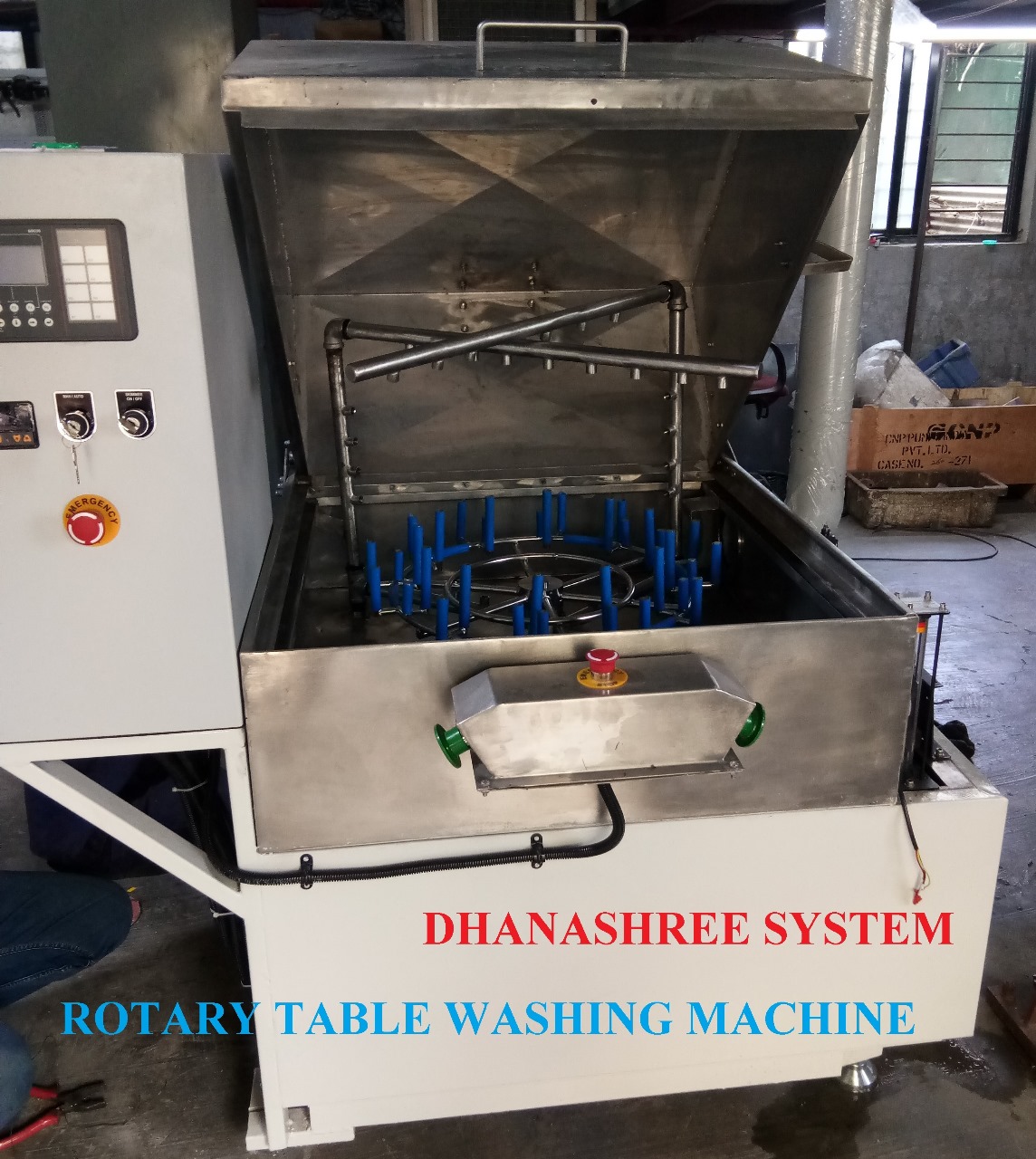 Dhanashree Systems
Dhanashree Systems
ROTARY TABLE WASHING MACHINE
A rotary table washing machine is a type of industrial cleaning equipment designed for efficiently cleaning parts and components using a rotating platform. This machine is particularly
effective for items that require thorough cleaning, such as automotive parts, metal components,
and industrial tools. Here are some key aspects:
Key Features:
1. Rotating Platform: The rotary table rotates during the cleaning process, ensuring even
exposure of all surfaces to the cleaning solution.
2. Multiple Stages: Many rotary table machines include multiple washing stages, such as
pre-wash, wash, rinse, and drying, allowing for comprehensive cleaning.
3. High Efficiency: The rotation facilitates faster and more uniform cleaning compared to
static washing methods.
4. Versatile Cleaning Options: These machines can use various cleaning methods,
including:
o Spray Wash: High-pressure jets spray the cleaning solution onto the components.
o Ultrasonic Cleaning: In some models, ultrasonic cleaning can be integrated for deeper
cleaning of intricate parts.
5. Compact Design: Rotary table machines often have a smaller footprint compared to
other industrial washers, making them suitable for facilities with limited space.
6. Automated Operation: Many machines can be automated for loading and unloading
parts, reducing manual labor and improving efficiency.
7. Adjustable Cleaning Parameters: Operators can typically adjust parameters like
cleaning time, temperature, and solution concentration to suit different types of parts and
contaminants.
Applications:
Automotive Industry: Cleaning engine components, transmissions, and other parts before
assembly or inspection.
Aerospace: Preparing parts for inspection and maintenance by ensuring they are free of
contaminants.
Manufacturing: Cleaning tools, molds, and other equipment to maintain optimal performance.
Considerations When Choosing a Rotary Table Washing Machine:
Size and Capacity: Ensure the machine can accommodate the size and volume of parts you need
to clean.
Type of Contaminants: Select a machine that can effectively handle the specific types of dirt,
oils, or residues present on your components.
Material Compatibility: Confirm that the washing method and chemicals used are safe for the
materials being cleaned.
Budget: Evaluate the cost in relation to your operational needs and efficiency improvements.
If you have specific requirements or need assistance with a particular model, let me know!